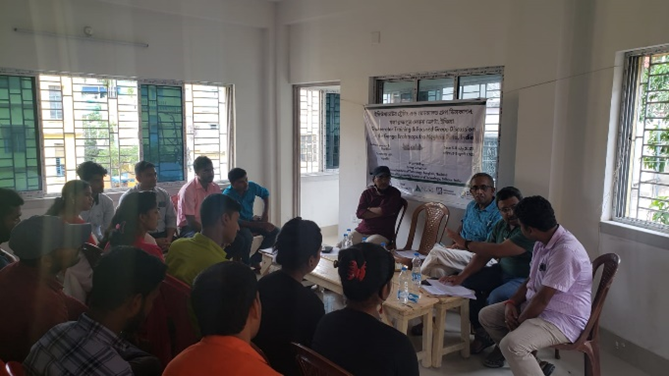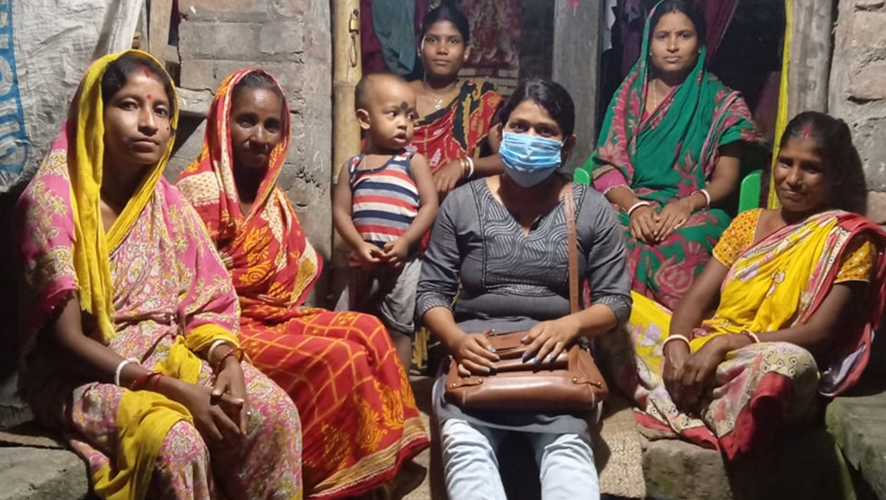Voices from the GBM Delta: Developing synergies between research and local experiences
By Indrajit Pala, Ayush Baskotaa, Anirban Mukhopadhyaya, Mashfiqus Salehinb, Manas Sanyalc, Ishtiaque Chowdhuryb, Subha Chakrabartyc
aAsian Institute of Technology, Thailand. bBangladesh University of Engineering and Technology, Bangladesh. cIndian Institute of Engineering Science and Technology, India.
Shared by India and Bangladesh, the Ganges Brahmaputra (GBM) Delta is more than just land and water; it's the collective home of over 280 million individuals, and is a place where cultures converge, where ecological wonders like the Sundarban mangrove forests thrive, and where economies flourish. But beneath its serenity, a harsh reality is emerging. The delta faces relentless challenges from both natural and human forces. In our ongoing effort to boost GBM’s resilience and sustainable future, we recognize the necessity of grounding our understanding in the very heart of this dynamic landscape. The Living Deltas Hub is exploring the voices and insights from the GBM Delta, developing synergies of research and local wisdom to empower the delta, it’s ecosystem and the people to flourish against the odds.
Unveiling the Risks, Challenges, and Potential Solutions Affecting the Delta’s Residents
A rural community in the GBM delta region in India. Coastal embankments are key to the delta community’s resilience to natural hazards including erosion and storm surge (Indrajit Pal)
To unveil the risks, challenges, and potential solutions that affect the lives and livelihoods of the delta's residents, the Living Delta Research Hub embarked on a groundbreaking journey. In 2022, we conducted an extensive household survey spanning the Indian and Bangladeshi regions of the delta. The survey's mission was clear: to unearth the multifaceted risks that the Social-Ecological System (SES) of the region faces, stemming from a complex interplay of physical, social, and economic stressors.
But it didn't stop at merely identifying the issues. Our survey delved deep into the practices, attitudes, and behaviours that communities employ to adapt and build resilience against these challenges. It aimed to assess how individuals perceive climate change impacts, from the looming threat of flooding to the encroaching spectre of salinity. We explored the gaps in agricultural practices and technology adoption, all within the context of the delta's rich natural and cultural heritage.
Our household survey was carefully crafted to unravel the intricate web of socio-economic status, natural hazards, and risk management in the delta communities. To achieve this, we identified key indicators through cross-sectoral discussions and expert insights. These indicators spanned across 10 dimensions; socio-cultural, demographic, health, economic, governance, natural hazards, and risk management aspects. The heart of our survey lay in the capable hands of our enumerators. They were carefully selected from local communities, ensuring they had an intimate understanding of the region's dynamics. Training workshops equipped them with the knowledge and skills they needed to navigate the complex questionnaire, utilizing a digital platform for efficient data collection and ensure a smooth survey process.
Glimpses of enumerator trainings implemented in Bangladesh (left) and India (right) in preparations for the household survey. (Md. Masud Rana & Anirban Mukhopadhyay)
The Challenges Facing the Survey Team
Surveying the GBM Delta, one of the world's largest river deltas, posed remarkable challenges. Its intricate network of rivers, islands, and wetlands created geographic isolation, hindering access to remote communities. Limited infrastructure, including roads, electricity, and communication networks, added to logistical complexities. The absence of a reliable mobile network prompted offline and paper-based surveys in some instances. Another challenge emerged in the form of a significant gender participation gap, with lower female involvement in India. Finally, the region's diverse ecosystem, prone to natural hazards and human-animal conflicts, tested the resilience of our surveyors. Despite these hurdles, the quest to understand the GBM Delta's dynamics continued, driven by dedication and the pursuit of knowledge and we were able to gather data from more than 2700 delta dwellers.
An enumerator seeks a response from a female respondent in Bangladesh. (Md. Masud Rana)
Preliminary Findings
The comprehensive survey and data collection are opening up the windows into the lives and livelihoods of the people living in the delta region. While thorough analysis and in-depth studies will be continued in the future, the preliminary findings of the survey provide an overview of the socio-ecological scenario of the region, validating a few known traits and revealing several unknowns.
Preliminary findings show that although agriculture is still prominent, it is slowly being replaced by other livelihoods. In India, more than half of the people living in the GBM delta are still primarily engaged in agriculture/farming. Agriculture is practiced more in the Sagar and Gosaba Blocks that lie in the fringes of the mangrove forests, where more than three-fourths of the population are engaged in farming, making these blocks the agricultural powerhouse of the region. On the other hand, in Sandeshkali and Hingalgunj blocks that lie further north, people have sought alterative livelihoods including small-scale businesses and salaried jobs. This mix hints at an upcoming diverse economic landscape, combining traditional agriculture with other income-generating options.
In Bangladesh, there is relatively less reliance on agriculture among the delta communities, with less than a quarter of its people directly involved in farming, and an additional 10% working as laborers on agricultural farms. Entrepreneurship thrives as well, as over one-fourth of the population owns businesses, ranging from small shops to commercial enterprises and even rickshaw and van services. Fishing is a way of life for nearly 20% of the population, with the Sundarbans mangrove forests drawing more fishermen than commercial aquacultural farms or the open sea. Furthermore, a small minority of Delta residents are also engaged in formal employment, providing stability and security to their families.
A GBM resident in Bangladesh engaged in fishing along one of the river channels. In the backdrop one can see the mangrove forests that serve as natural barriers to environmental impacts in the delta. (Md. Anisur Rahman Majumdar)
Similar to India, livelihoods in Bangladesh are also geographically diverse. In Bagerghat, fishing dominates, with a quarter of the population engaged in Sundarban fishing. In districts like Barguna, Jessore, Khulna, Patuakhali, and Pirojpur, farming takes centre stage, with associated labour activities also thriving. Satkhira, on the other hand, stands out with a nearly equal division of its population across various occupations, including rickshaw and van driving, small-scale businesses, farming, and wage labour. This diversity contributes to the region's cultural and economic vibrancy, while also providing people with income generating activities that are less prone to the effects of natural hazards.
The surveys have also provided a glimpse into the daily lives and socio-economic status of the delta communities in the two countries. In India, almost all people are dependent on tube-wells for drinking water. In Bangladesh, drinking water sources are more distributed; tube wells are still mostly used, but other sources such as rainwater harvesting is also equally common among the people. There is also a higher dependency on water retrieved from rivers and canals in Bangladesh than in India. Alarmingly, a majority of people in both the countries do not perform any treatment or disinfection of the water retrieved from the source.
Vital Evidence
More than 2,700 people living in the delta generously shared their experiences and insights for the survey, contributing to a wealth of invaluable information. This data will not only contribute to Living Delta’s research objectives but also provides a bedrock of evidence for stakeholders seeking to develop strategies for individual, household, and community-level resilience against hazards. It's a vital step towards understanding the economical, nutritional, food security, and health risks within the delta's SES, as well as assessing the role of risk governance in fostering community resilience. And, this data will shed light on livelihood shifts, the pivotal role of entrepreneurship, and the remarkable contributions of women to risk management in the delta.
An enumerator in India poses with a group of women respondents during the survey. The data collected have provided a deeper insight into the lives of the delta dwellers (IIEST)
The comprehensive survey in GBM serves as a window into the lives, challenges, and resilience of delta communities. The Living Deltas team will explore multiple ways in which the data can be harnessed for ongoing research. It will provide strong evidence to corroborate research and provide clarification and community-level perspectives for research findings. Information on perceptions towards natural hazards, coping strategies and governance will be helpful to generate discussions on the trends of change, and provide basis for recommendations.
Enjoyed reading this blog? Sign up for our newsletter to stay up to date with the latest updates on our Household Survey and other areas of research






